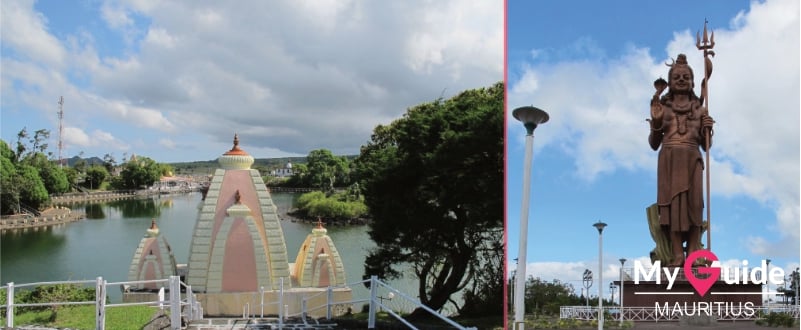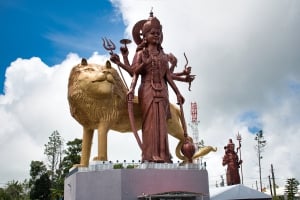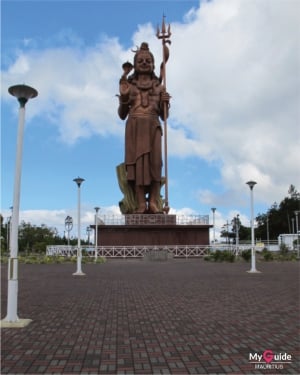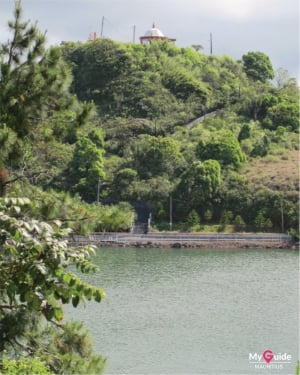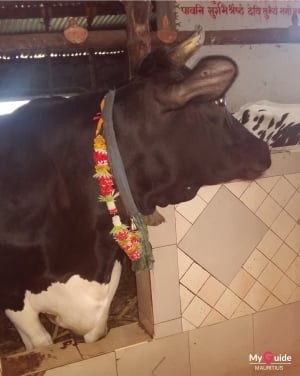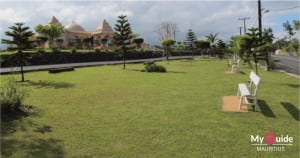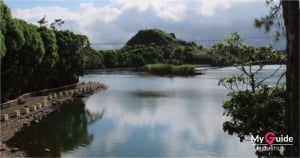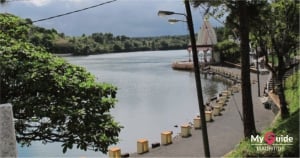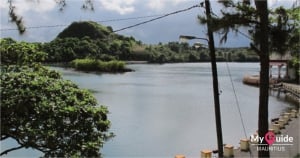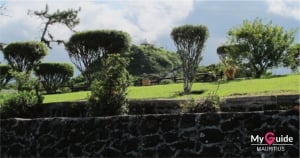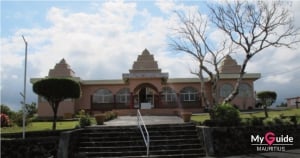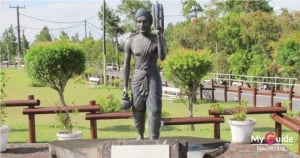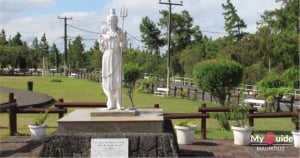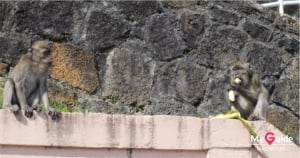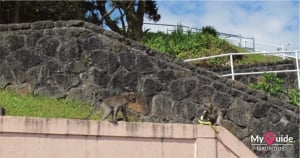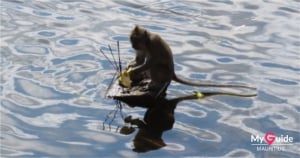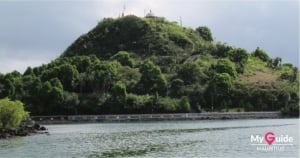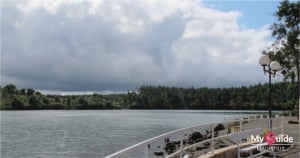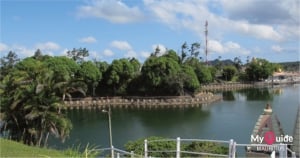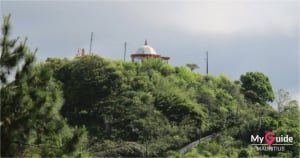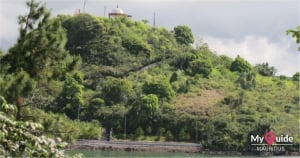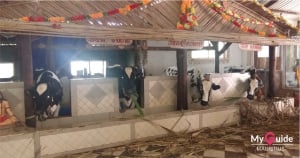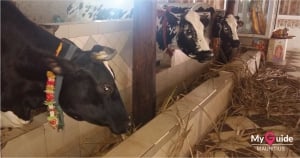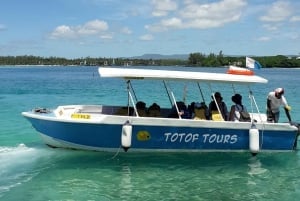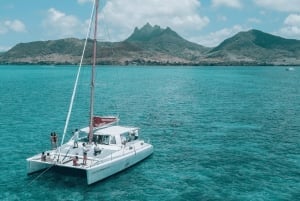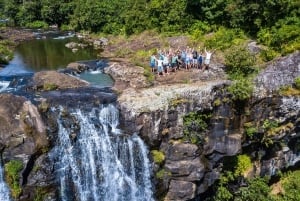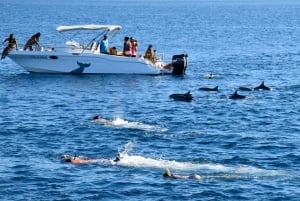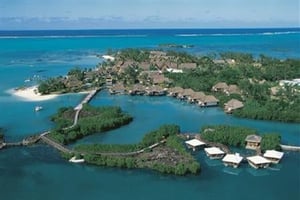Ganga Talao - Grand Bassin Sacred Lake
Book Top Experiences and Tours in Mauritius:
If youʻre booking your trip to Mauritius last minute, we have you covered. Below are some of the top tours and experiences!- Black River: Dolphin Swim and Whale Watching by Speedboat
- Ile aux Benitiers: Shared Full-Day Catamaran Cruise & Lunch
- Port Louis & Northern Mauritius Full Day Guided Tour
- Blue Bay: Half-Day Snorkeling Trip with Creole Picnic Lunch
- Mauritius: Catamaran Day Cruise to lle aux Cerfs with Lunch
The area around Ganga Talao was first developed by former indentured servant Pandi Sanjibonlal in 1866 (See more details on history below) to be a haven for Hindus to worship Shiva and other deities. It was the place where they went on pilgrimage during the main festival of Shiva (Maha Shivaratri) and washed themselves in the lake which was to symbolize the Ganga River, the most sacred river in the world for the Hindus.
Pandi Sanjibonlal was instrumental in constructing numerous temples onsite. He brought a huge Shivalingam, along with other deities, from India and had them consecrated in the temples. Along the lake shores, you can visit stunning Hindu temples like the Sagar Shiv Mandir, and others dedicated to Lord Ganesh, the Goddess Ganga and Lord Hanuman. The temple of Lord Hanuman is found on a hilltop and you have to climb 108 stairs to reach it, the view at the top is breathtaking. The 108 stairs represent the 108 names of the Lord in the Sanskrit language. Some devotees/ pilgrims chant the 108 names while climbing the stars for their wishes to be fulfilled. The view at the top is breathtaking.
But the most amazing scenery which will catch your attention as soon as you arrive at Grand Bassin now, are the two fascinating statues of the two deities: Lord Shiva and Durga Maa. The Mangal Mahadev is a 33 metre tall statue, a tribute to the Hindu god Lord Shiva, it is the third tallest statue of Shiva in the world. It is a faithful copy of the Shiva statue of Sursagar Lake in Vadodara, Gujarat, India. The Durga Maa statue which is also 33 metre high and is the largest statue of the Hindu Goddess Durga in the world. They have been designed by Indian sculptor Shri Matu Ram Verma, already famous for his giant statues. There are other smaller colourful shrines dedicated to other popular Hindu deities all around the sacred lake.
There is a lot of vegetation around the lake which is home to wild monkeys. The devotees who come for prayers on the shore of the lake, make offerings such as fruits (coconut, banana, apple) and incense sticks. The monkeys attracted by the fruits usually come out to eat them. If you are lucky enough when visiting Grand Bassin you may catch a glimpse of this amazing scene. You will see people who have just offered prayers in the temples walking around with their tilaka most commonly know as tika in Mauritius (it a mark worn usually on the forehead (red dot) on religious occasions). You will also enjoy the view of giant eels and fish in the lake but since it is a sacred lake it is not allowed to catch them.
There is also a special place of worship for the visitors not to be missed, it is a place dedicated to the devotees of Lord Krishna. There you will be able to see Sacred Cows and you can even feed them with fresh grass found onsite. Lord Krishna, one of the Hindu deities is often depicted in pictures playing his flute amongst cows and dancing Gopis (milkmaids). He grew up as a cow herder. Krishna also goes by the names Govinda and Gopala, which literally mean “friend and protector of cows.” It is considered highly auspicious for a true devotee to feed a cow. There is a small shop there where you can buy religious items and also sweets.
Each year during the celebration of Maha Shivaratri (between February or March) many Hindus on the island make the pilgrimage from their home to the lake some even walk all the way bare feet to show their devotion to Lord Shiva and to fetch holy water from the lake. The processions flock to the Sacred Lake carrying their ‘Kanwars’ (structures supported by wooden rods and richly decorated) and sometimes even with dholak (musical instruments). You will also hear them chanting religious phrases as ‘Har Har Mahadev’ & ‘Bhum Bhum Bole’ to the glory of Lord Shiva. The holy water is ritually poured over the statue of Shiva on the day of the festival. It is worth to note that it is such a big and fervent festival that even people from other religions make the pilmigrage to offer prayers. Other big Hindu Festivals such Durga Pooja and Navaratri are also celebrated each year there.
Note: You must remove your shoes / sandals before entering the temples. It is also advised to dress modestly or bring a shawl to cover your shoulders when entering the temples. You can choose to have blessings even if you are not of Hindu faith and invited to wear a ‘Tikka’ (red dot) on your forehead. The sacred lake is open to visitors and pilgrims every day. There is no entrance fee.
History
The area around Sacred Lake Ganga Talao was first developed by former indentured servant Pandi Sanjibonlal in 1866. He felt a divine energy at Grand Bassin and had a dream of making it a pilgrimage place where the Hindus present on the island could go for prayers and celebrate the main festival of Shiva (Maha Shivaratri).
In India it was firmly believed that Hindus should visit and take a bath in the Ganga as often as possible. Thus Grand Bassin namely Ganga Talao would symbolically represent the Ganges for the Hindus who came on the island as indentured workers. He designed Grand Bassin as a haven for Hindus where they could worship Lord Shiva and other deities and go on pilgrimage during Maha Shivaratri.
But unfortunately at the very beginning labourers were not allowed to take leave for religious purposes therefore they could not go. Later on in 1895, the labourers stated their wish to participate in the pilgrimage and through negotiations permission was granted with a first group led by Pandi Sanjibonlal himself and consisting of retired labourers walked to the Sacred Lake, following the route he had already made in previous years when he and his close friends were going there.
In 1898 the very first group of independent pilgrims was led by Pandit Giri Gossayne from the village of Triolet in the north of Mauritius to Ganga Talao.


